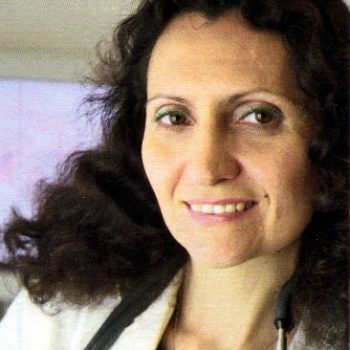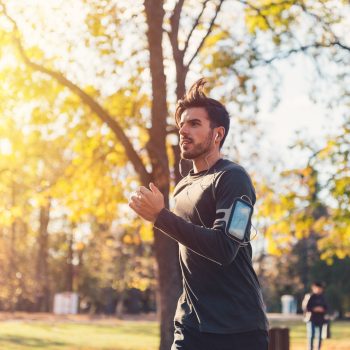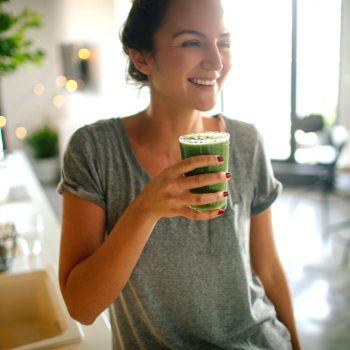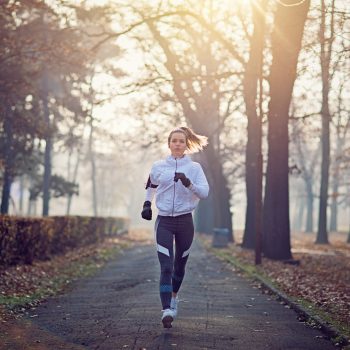“Every age has its own youth”, wrote Benedetto Croce. Indeed, youth can stay with us much longer than we think. How does journalist and writer Eliana Liotta explain this in her new essay written for ‘The Ship of Theseus’, in collaboration with doctors and researchers of Humanitas. “Age is not the same for everyone”, this is the title of the book, in the bookstore since 17 May, an education to stay young and healthy, according to the most reliable scientific studies. At 30, 50 or 70 years of age, the secret lies in knowing how to contrast the processes of inflammation, at the base of a long series of pathologies. The various chapters describe how to do so, thanks to the special multidisciplinary contribution of the doctors and researchers of the great Milanese clinical and research center, the university hospital Humanitas. The book was co-authored by leading doctors in neuroscience, gastroenterology, nutrition, physiotherapy, dermatology, cardiology, rheumatology, and plastic surgery, together with Alberto Mantovani, the scientific director of Humanitas, the most widely cited Italian scientist in international literature. The book is a unique project in Europe and a guarantee of seriousness and accuracy of content, particularly important in an era when fake news is rampant in the field of health.
Science of Youth: A Practical Guide
What is the secret to retaining the golden years of body and mind?
According to the most convincing theories, the key to curbing physical decay and even turning back aging is to turn off chronic inflammation: it is the small silent fires that burn inside us that accompany the wrinkles on the skin and the most common evils, from cancer to diabetes, from cardiovascular diseases to obesity and Alzheimer’s disease.
In the first part of the essay, the author explains how in a novel, with narrative language, the battles between good and evil that take place in our bodies, with soldiers of the immune system engaged in a daily war that no one imagines fighting. In the second part, each reader will find an easy and practical guide, with elegant illustrations signed by Jessica Lagatta, to apply the results of her research to her everyday life. Intervening to extinguish inflammatory states means acting on several fronts, combining a range of actions that enable us to live with more power and better.
Scientists prescribe three anti-inflammatory pills: healthy food, movement and controls. However, love and curiosity pills should also be recommended. Chronic stress causes inflammation while joy and the desire to learn are always an antidote.
The essay concludes with a series of answers to the most frequently asked questions, a “true and false” on the topics dealt with in the various chapters.
Stopping chronic inflammation
Acute inflammation saves lives. Explodes like a fire, in the presence of a virus or wound, causing redness, heat, swelling, and pain. However, the process must be completed. If you don’t dampen, you take away health and youth, according to a phenomenon called inflammaging, one among the most credited theories on aging.
The chronic inflammation is like a flame that burns under an ember. It does not give symptoms but spreads from one tissue to another and at a certain time can manifest itself through one of the major chronic diseases and age-related cancers: from cancer to atherosclerosis.
There is a way out. Often you just have to improve your nutrition and start being more active to move water toward the spine and try to reverse the wrinkles. It is never too late.
What causes chronic inflammation? Over the years, the immune system loses its strength and the ability to accumulate senescent cells, which produce inflammatory mediators.
Lifestyles also have an impact, regardless of age. Smoking and alcohol abuse are toxic. Too many calories and some food ingredients, such as hydrogenated fats, are inflammatory. Chronic stress also puts the immune balance on the risk. Mind and body are so connected that tension, pain and loneliness, according to the latest studies, can cause inflammation.
Foods that “turn off” the inflammation
Nutrition and nutrigenomics investigations (the discipline that studies the relationship between nutrition and genome) have identified six anti-inflammatory foods, with a treasure of substances that, once arrived in the cells, dialogue with the immune system and DNA, even silencing the pyromaniac genes, those that produce inflammatory proteins:
- Tomatoes;
- Oranges and red fruits, from blueberries to cherries;
- Nuts, such as almonds and walnuts;
- Green leafy vegetables such as spinach, chicory and lettuce;
- Fatty fish, such as mackerel, sardines and salmon;
- Extra virgin olive oil.
These foods should be consumed, with portions at will, within the anti-inflammatory diet par excellence, the Mediterranean diet, a lifestyle for which the world envies us. Its pillars foresee the consumption of vegetables, legumes, cereals and whole grain derivatives, extra virgin olive oil for seasoning, fish. Moreover, the diet recommends little meat, preferably white, moderate consumption of eggs and cheese, better fresh.
There are five types of food to limit, because they undoubtedly accelerate inflammatory processes: fried food, sweetened drinks, refined carbohydrates, lard and margarines, meats processed as cold cuts and sausages.
Among the foods of youth, there are also prebiotics, i.e. foods that make intestine-friendly bacteria proliferate, those that collaborate in vital functions such as digestion and vitamin production. We host trillions of them, an alien community called the microbiota. If dangerous microbes prevail, the intestine can become an outbreak of inflammation. That’s why scientists work on a menu pleasing to good bacteria.
So far, three prebiotic, smart ingredients for the intestinal microbiota have been identified:
- Inulin, soluble fiber (contained in foods such as asparagus, artichokes, chicory, lettuce, radish, Jerusalem artichokes, garlic, onions, leeks);
- Pectin, a soluble fiber (found in apples, plums and albedo, the white part of citrus fruits);
- Resistant starch i.e. the fraction of indigestible starch that forms, for example, when cooked starch cools (in boiled potatoes at room temperature; cold salad of rice, spelt, barley or pasta).
One food recommended for the brain is dark chocolate: cocoa is a kind of supplement that protects mental abilities, including memory. Furthermore, it activates the production of endorphins, neurotransmitters endowed with analgesic and exciting activity, and contributes, with its ingredients, to the so-called molecules of euphoria (dopamine) and relaxation (tryptophan).
Physical movement, anti-age elixir par excellence
For a number of reasons, recognized or not yet understood, moderate physical activity is an ordinary remedy for prolonging youth and an extraordinary remedy for reversing the march when the biological age is further than the registered age.
Those who are physically active are at lower risk of becoming ill because their immune system trains with them. How does this happen? A rather intense test, such as a run or a session in the gym, is associated with a small injury to the muscles, which triggers inflammation and requires the intervention of our defenses. This is gymnastics for the immune system, which will become better and better at extinguishing inflammatory states.
Moreover, there is another action that is somehow anti-inflammatory: according to the latest studies, sport would keep intestine-friendly bacteria healthy. Benefits from the belly to the brain: those who are physically active think better and enhance memory. Endorphins are produced by physical activity, molecules known as good humor molecules that help to dispel stress. Suggested activities after the age of 18 include:
- Endurance activity, or aerobic activity, such as walking at rapid pace (at least 30 minutes of moderate activity 5 days a week);
- Strength exercises, with weights;
- Flexibility exercises, such as stretching, Pilates or yoga.
- After 65 years of age, exercises to improve the balance.
Cultivating love, smiles, and knowledge
If the body feeds and moves as it should the inflammation decreases. However, it seems that it also decreases when the brain is inflamed with curiosity and warms up with feelings. Since there is an axis between the head and the adrenal glands, the glands that start to produce a hormone cortisol, when there is too much pain, too much stress, and too much loneliness. Consequently, cortisol lowers the immune system.
As if that weren’t enough, chronic stress affects the functioning of the intestine and the cells themselves, which can make them senescent, old-fashioned, and therefore pro-inflammatory.
The brain asks us to be what evolution has brought us to become: social animals, people who are well if they find themselves, if they love and laugh. Loneliness, on the other hand, is related to high levels of inflammation.
Five pieces of advice can be given, based on the results of a series of studies, on how to embrace existence.
Always learn. You should never stop learning, because knowledge translates into networks of connections between neurons. And this refines the ability to be in the world and creates a kind of cognitive reserve, a treasure that can compensate for the decline that may occur.
Be malleable. When the brain operates automatically, its activity level is reduced. That’s why it’s good to vary from one’s habits: not always walk the same path or not always follow the same mental patterns. Youth, after all, is malleability, the opposite of the inflexible cages in which we happen to be imprisoned year after year.
Feel useful. Having a purpose in life, building new goals: The term coined to define the optimal condition is self-efficacy. It means believing, in the depths, that one’s own being in the world makes a difference. We humans need to feel useful. Volunteering, for example, is an altruistic gesture but also a good thing for those who do it, for the very fact of engaging in a cause.
Loving. Cultivating affections, both within and outside the family, spending time in company, laughing: even if it is difficult to measure the power of feelings, more and more surveys prove that social ties influence health.
Seek harmony. There is no standard recipe to find harmony between oneself and the world, governing stress. Everyone should seek his or her own way. The recent results on the effectiveness of practices aimed at harmonizing body and mind, that is a martial art such as tai chi or the psychological Mindfulness meditation technique, are surprising. Well, it seems that they are able to counteract the effects of stress by silencing the expression of pyromaniac genes, those that order the production of inflammatory molecules.
Controls and vaccines
One can hope to mock the years that pass on the wave of scientific progress. Check-ups, to begin with, are extremely important because early diagnosis saves your life: from blood tests, every couple of years, to specialist visits, such as those at the dentist’s (inflammation can nest in your mouth).
And then there are vaccines, also recommended for adults to avoid contracting diseases that can put the body to the test. From the flu vaccine, recommended to everyone after 50, to the measles vaccine, if you haven’t done it as a child or if you need to repeat it, since with the years the immune system loses its memory. There are also two vaccines specifically recommended for the elderly: against pneumococcal disease and against herpes zoster.
The authors
Eliana Liotta, author of the essay L’età non è uguale per tutti, journalist, writer and scientific communicator, made her debut in bookstores in 2016 with La Dieta Smartfood, an international bestseller currently being published in over 20 countries, based on the principles of the Mediterranean diet and on studies in nutrigenomics. From the essay and its subsequent practical application, Le ricette Smartfood (prepared with the advice of a team of chefs), took inspiration for her series in 15 volumes of Food and Science, distributed at newsstands with the Corriere della Sera.
In 2017, together with the breast surgeon Paolo Veronesi, she wrote the essay The Good of Women, which is both a tale of the female universe and a scientific guide to health.
Eliana Liotta is active on Io donna, the weekly of Corriere della Sera, the blog “Il bene che mi voglio”, for which she won the Premiolino, the oldest Italian journalistic prize. She was editor of the monthly, the website and the OK Salute book series of the RCS for seven years.
She is a pianist and was appointed by the City of Milan vice-president of the Arcimboldi Theatre and board member of the Dal Verme Theatre (Fondazione I Pomeriggi Musicali). She is ambassador of the Certamen Ciceronianum of Arpino.
Authors that collaborated on the book, each for their own skills:
Alberto Mantovani, Scientific Director of Humanitas, Professor of General Pathology at Humanitas University, President of the International Union of Immunological Societies (IUIS);
Gianluigi Condorelli, Director of the Cardiovascular Department of Humanitas (Humanitas Cardio Center) and Full Professor of Cardiovascular Diseases at Humanitas University;
Antonio Costanzo, Head of the Operational Unit of Dermatology at Humanitas and Full Professor of Dermatology at Humanitas University;
Giovanni Covini, hepatologist, in charge of the Check-up area at Humanitas;
Silvio Danese, coordinator of the Humanitas Immunology Center, head of the Centre for Research and Treatment of Inflammatory Bowel Diseases at Humanitas and full professor of Gastroenterology at Humanitas University;
Roberto Gatti, head of the Physiotherapy Service at Humanitas and coordinator of the degree course in Physiotherapy at Humanitas University, where he is an extraordinary professor of Nursing Sciences and Neuro-psychiatric and Rehabilitative Techniques;
Marco Klinger, Head of the Plastic and Reconstructive Surgery Unit at Humanitas and Full Professor of Plastic Surgery at the University of Milan;
Massimo Locati, head of the Laboratory of Leukocyte Biology at Humanitas and full professor of General Pathology and Immunology at the Department of Medical Biotechnology and Translational Medicine at the University of Milan;
Daniela Lucini, Head of the Department of Medicine, Exercise and Functional Diseases at the Orthopedic Rehabilitation Unit at Humanitas and Associate Professor of Methods and Teaching of Motor Activities at the University of Milan;
Michela Matteoli, Director of Humanitas Neuro Center and the Neuroscience program in Humanitas, Director of the Institute of Neuroscience of the National Research Council (CNR) and Full Professor of Pharmacology at Humanitas University;
Manuela Pastore, clinical dietitian at the Humanitas Health Department and contract professor at the University of Milan in the degree course in Nutritional teaching and dieting for digestive system diseases;
Carlo Selmi, Head of the Unit for Clinical Rheumatology and Immunology at Humanitas, researcher and lecturer in Rheumatology at the University of Milan.








